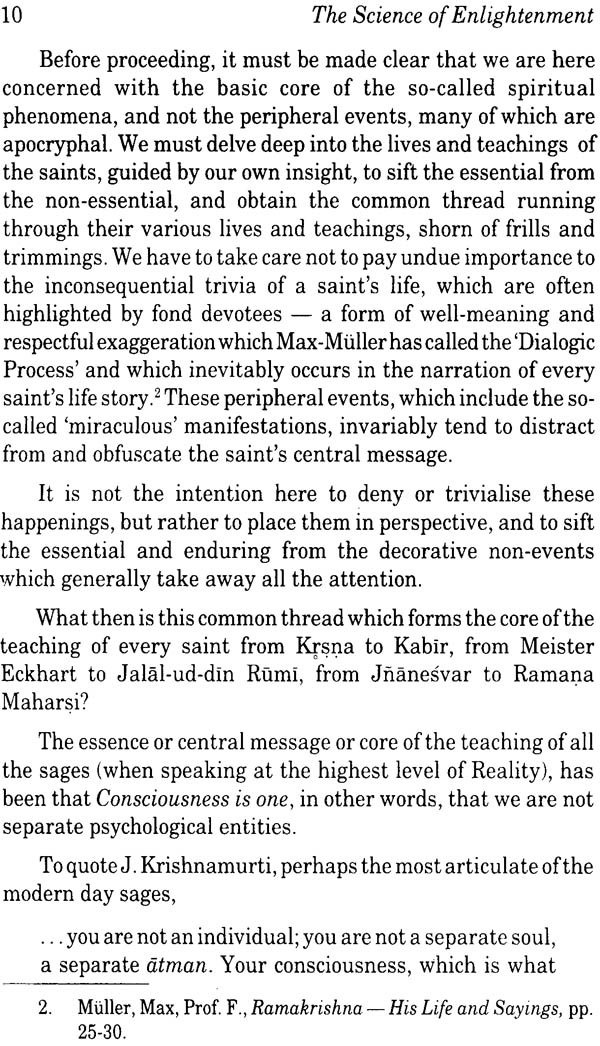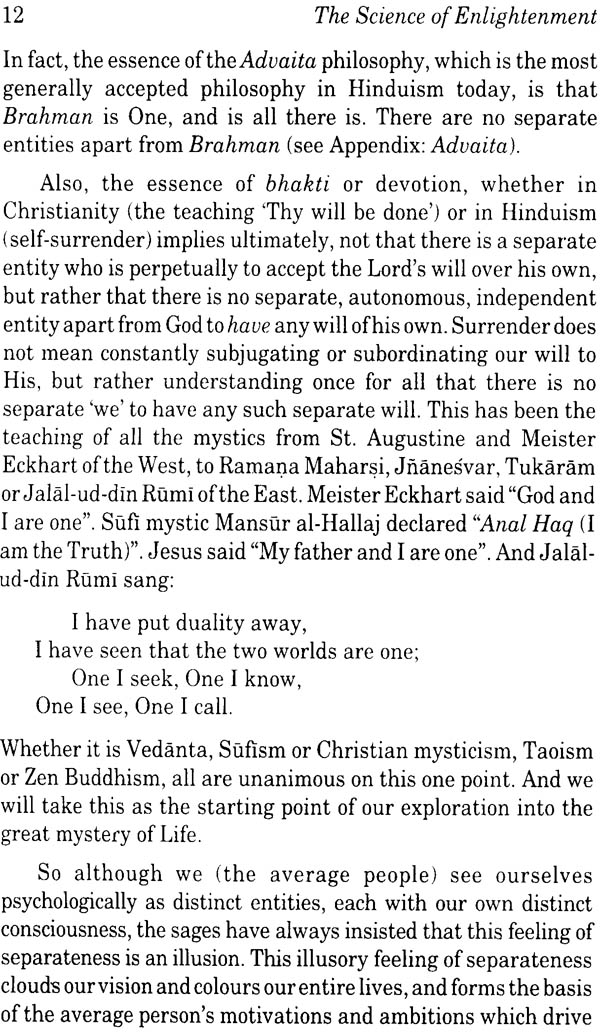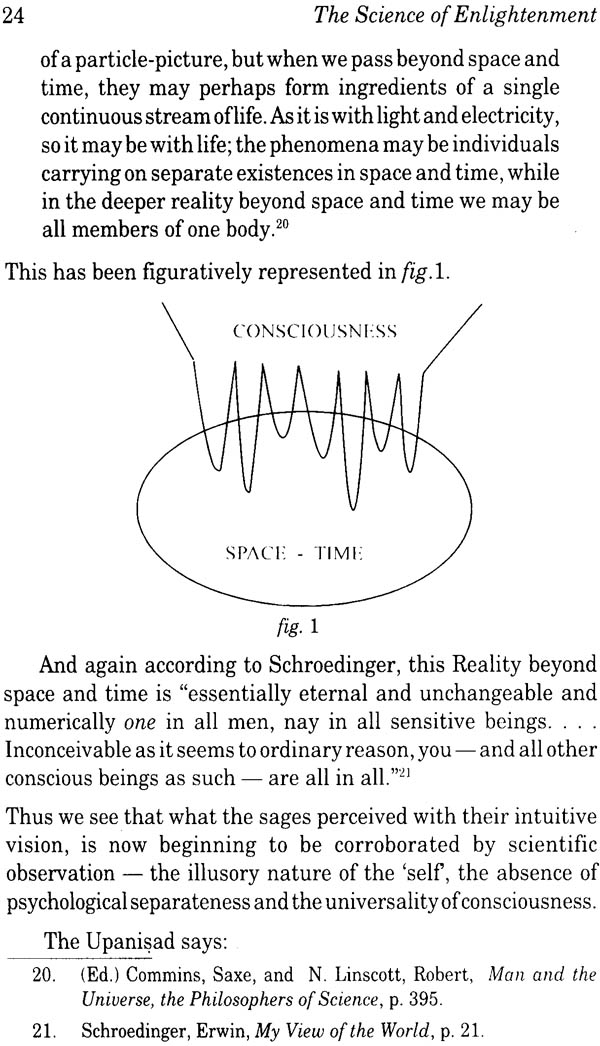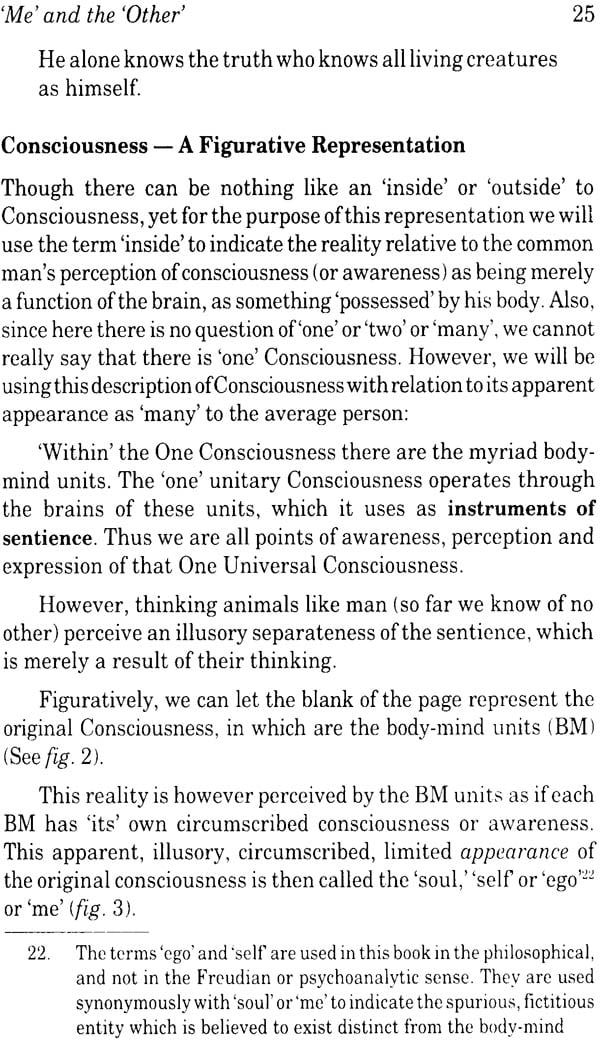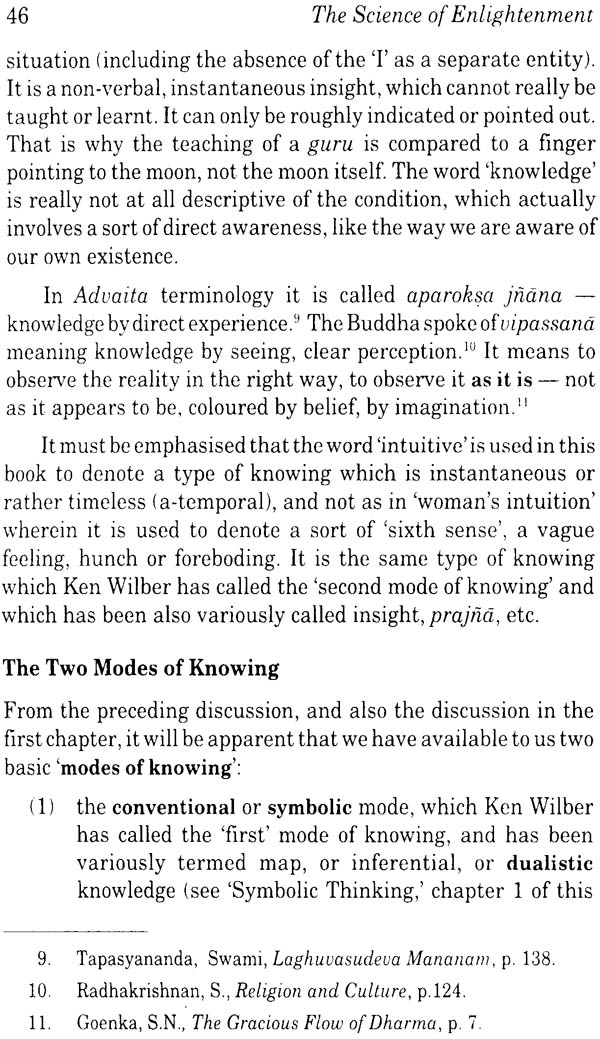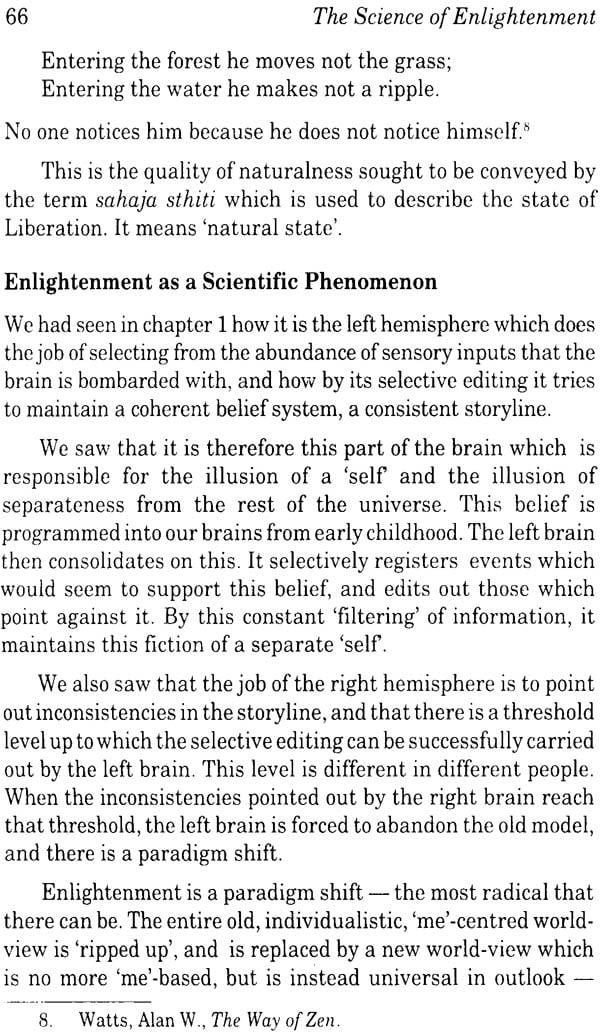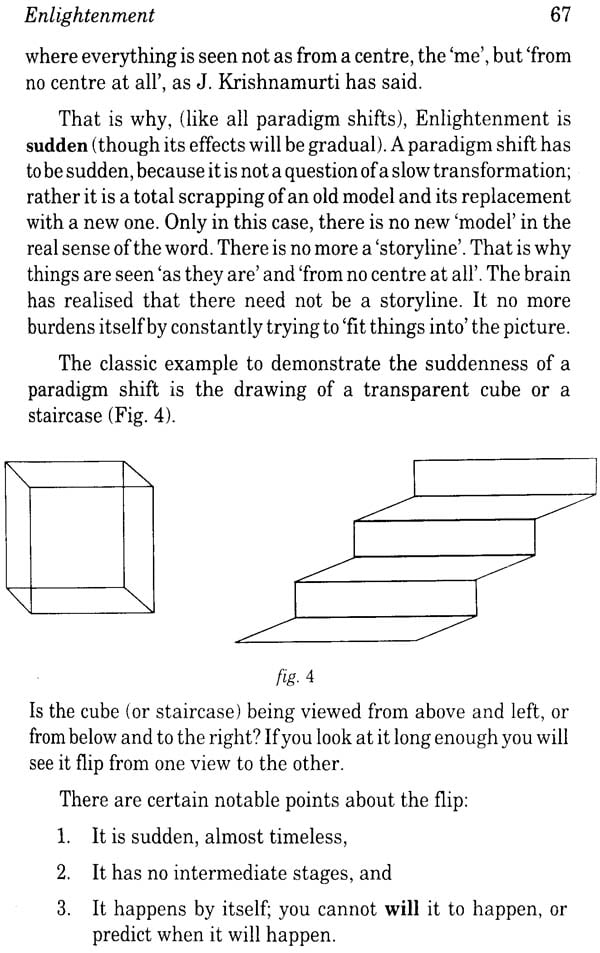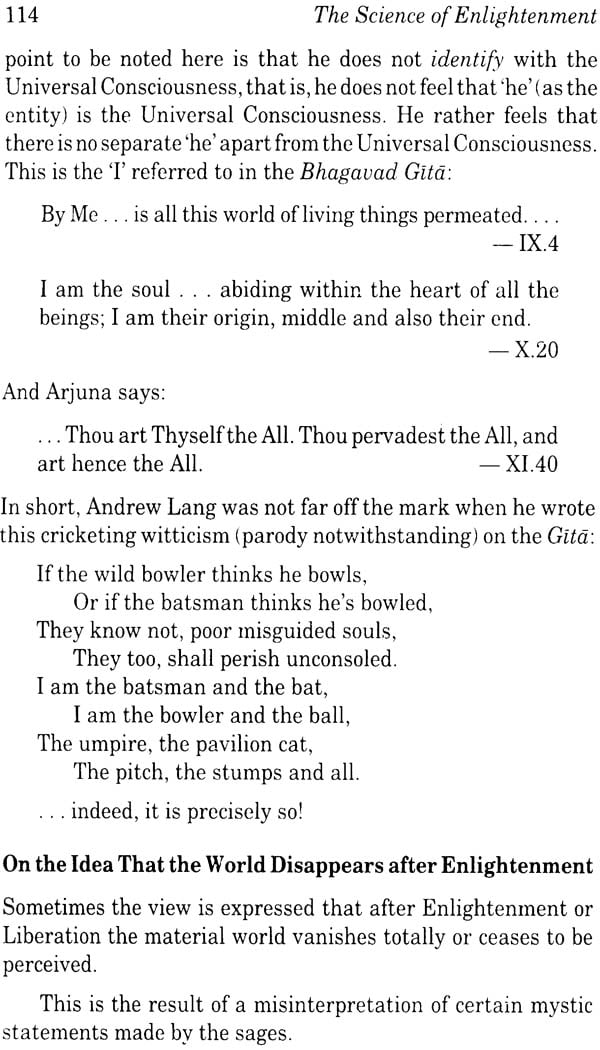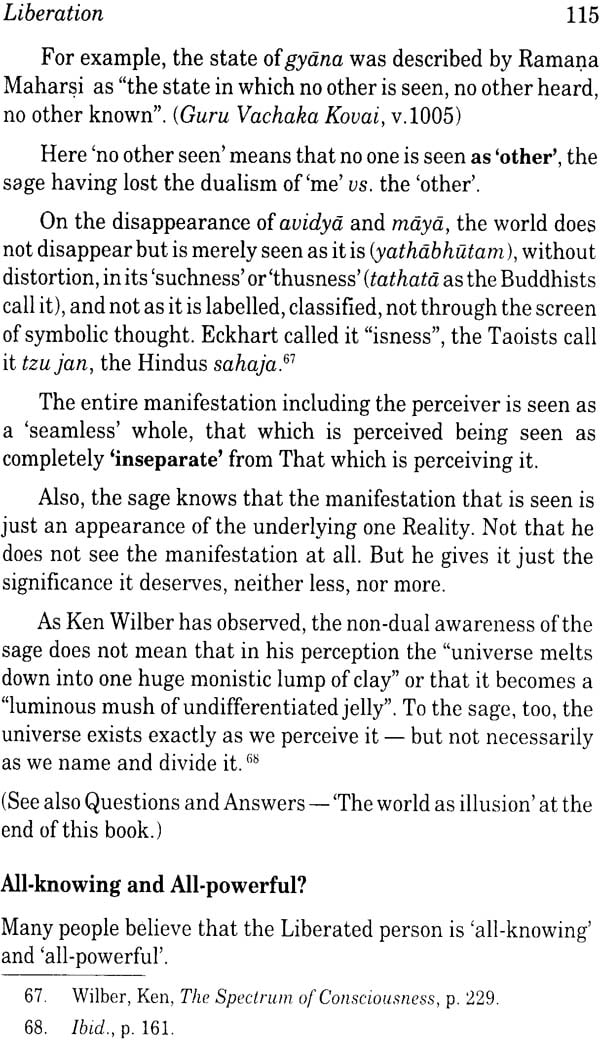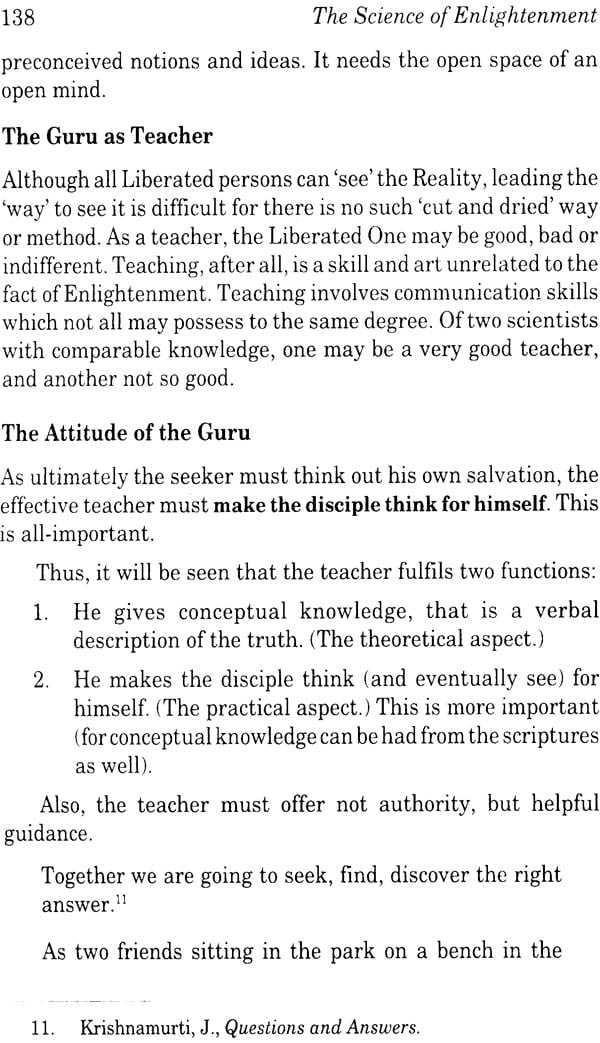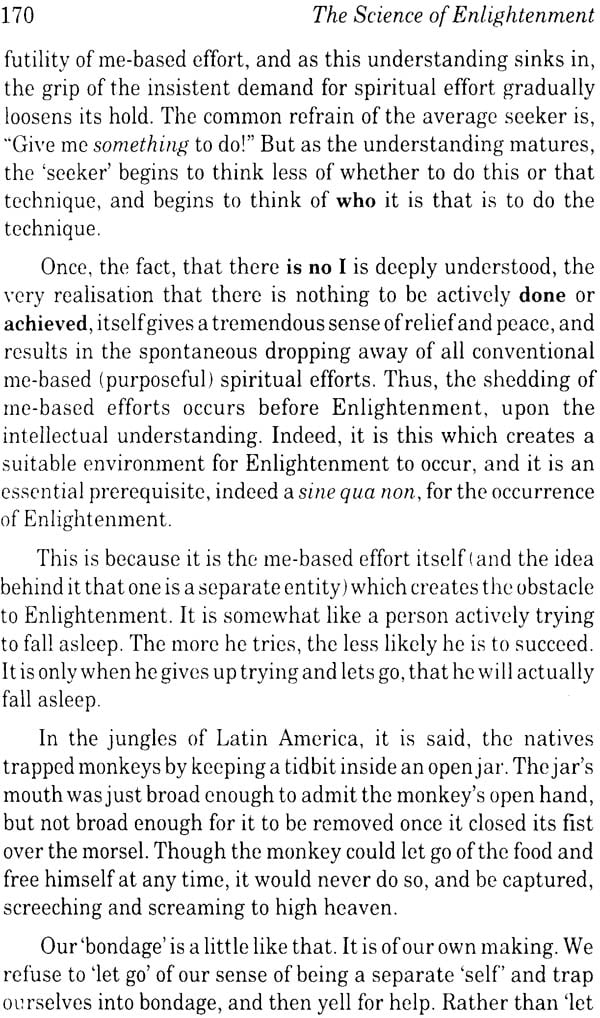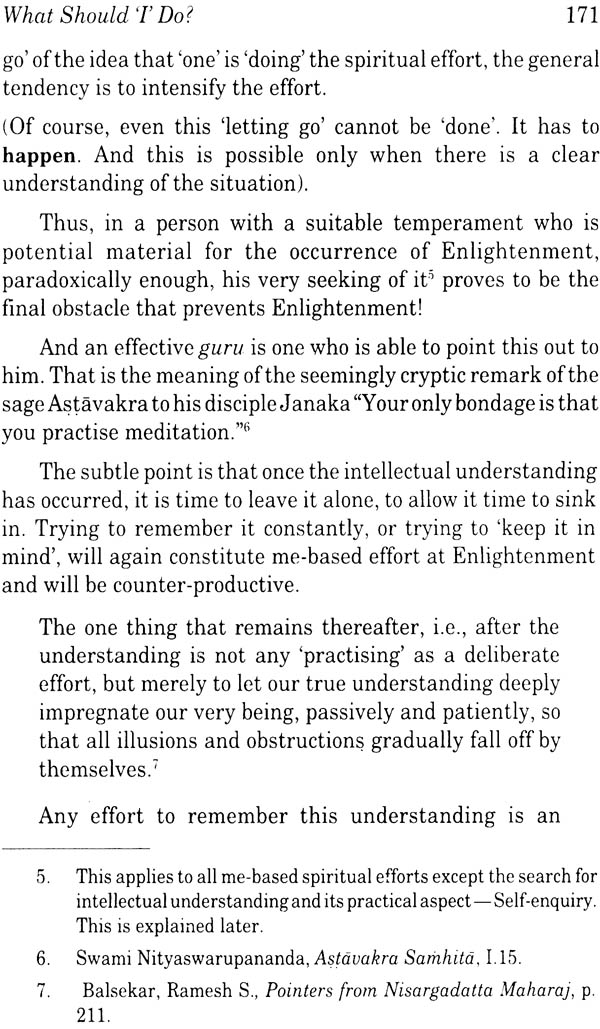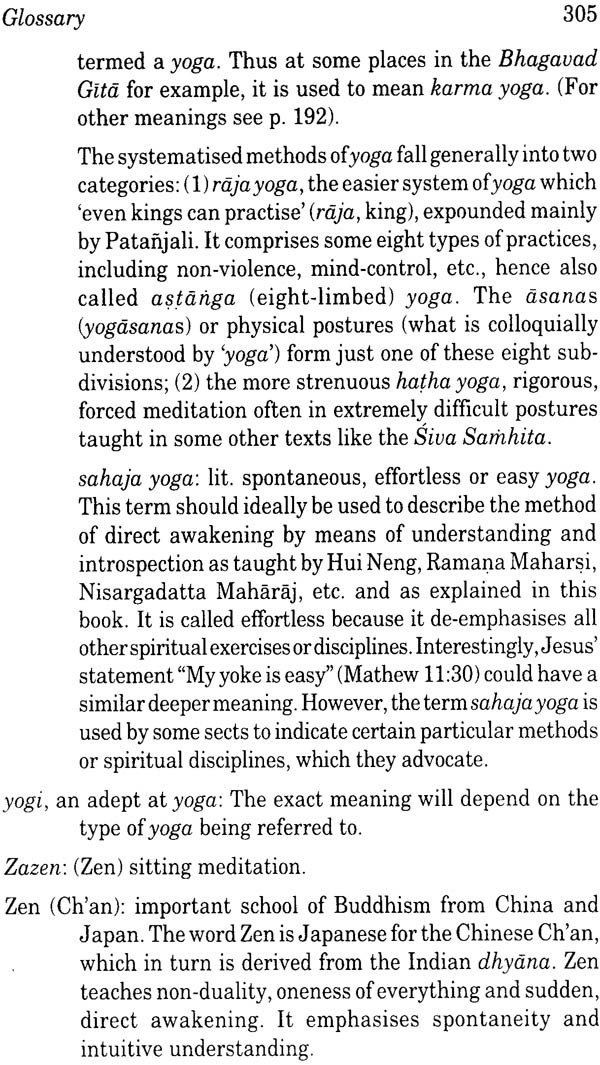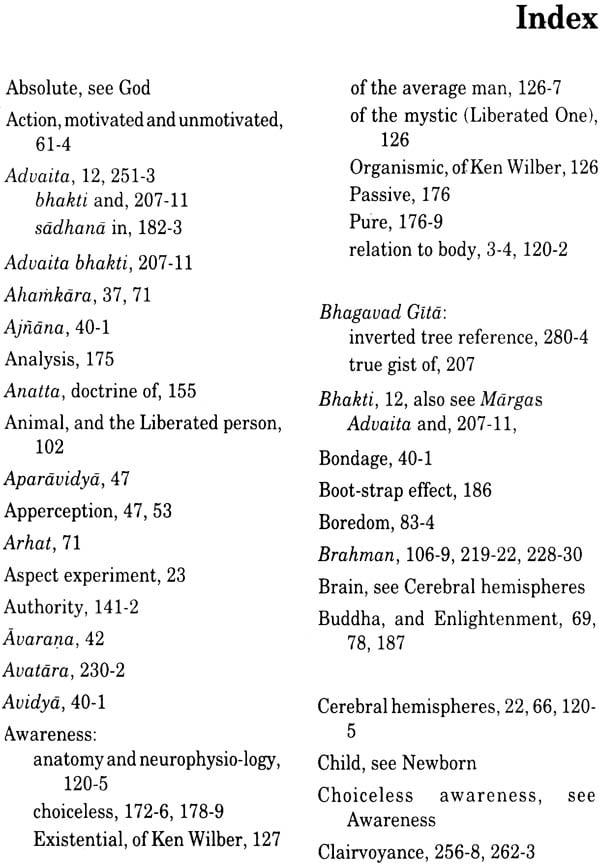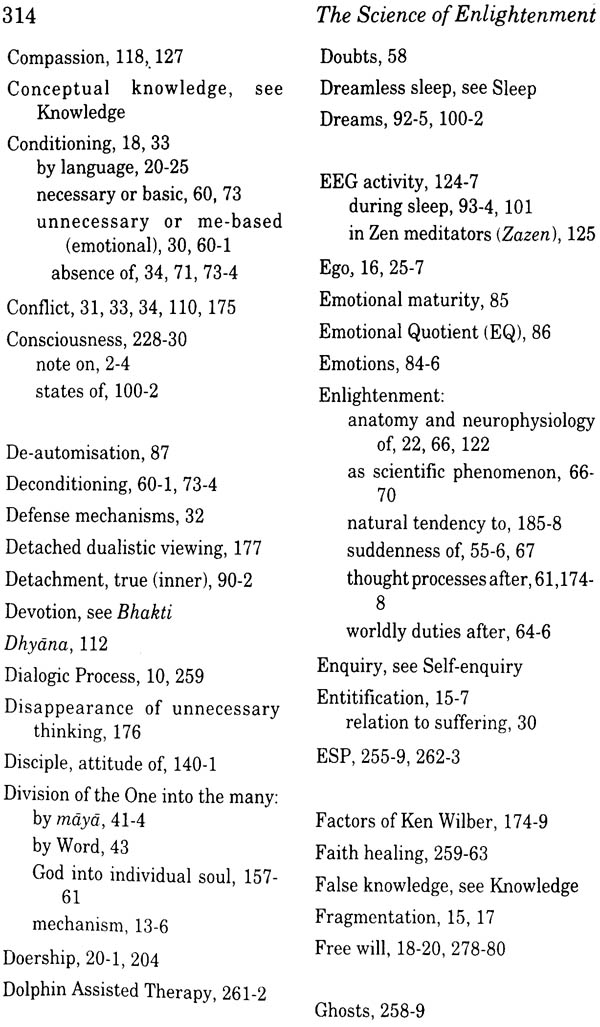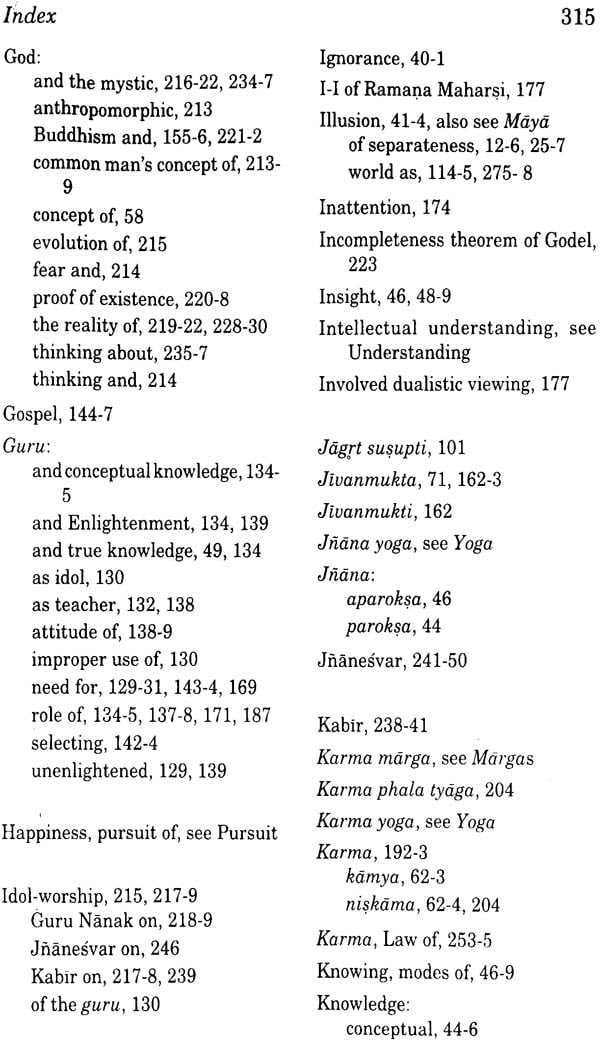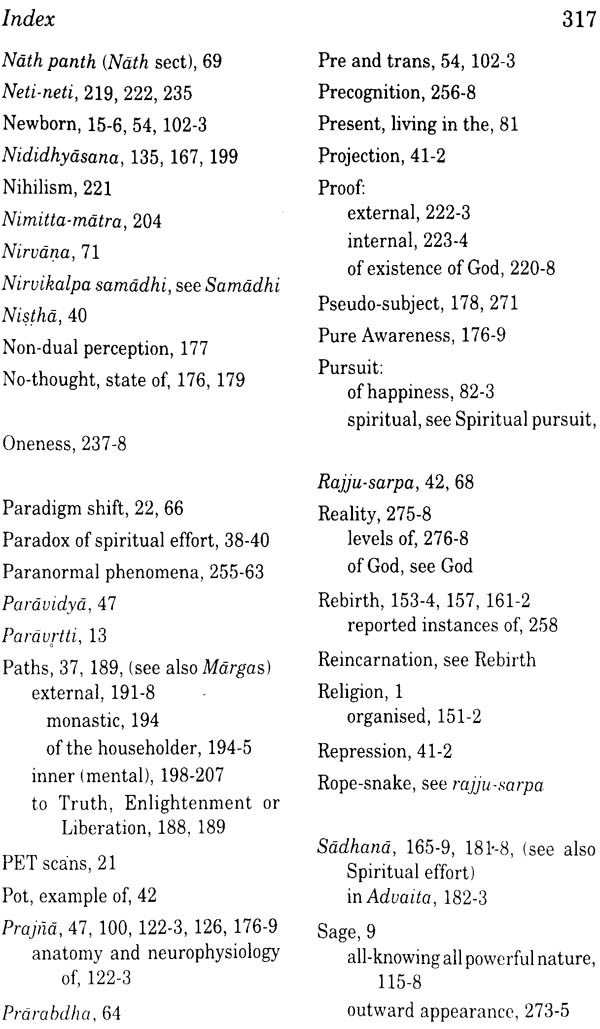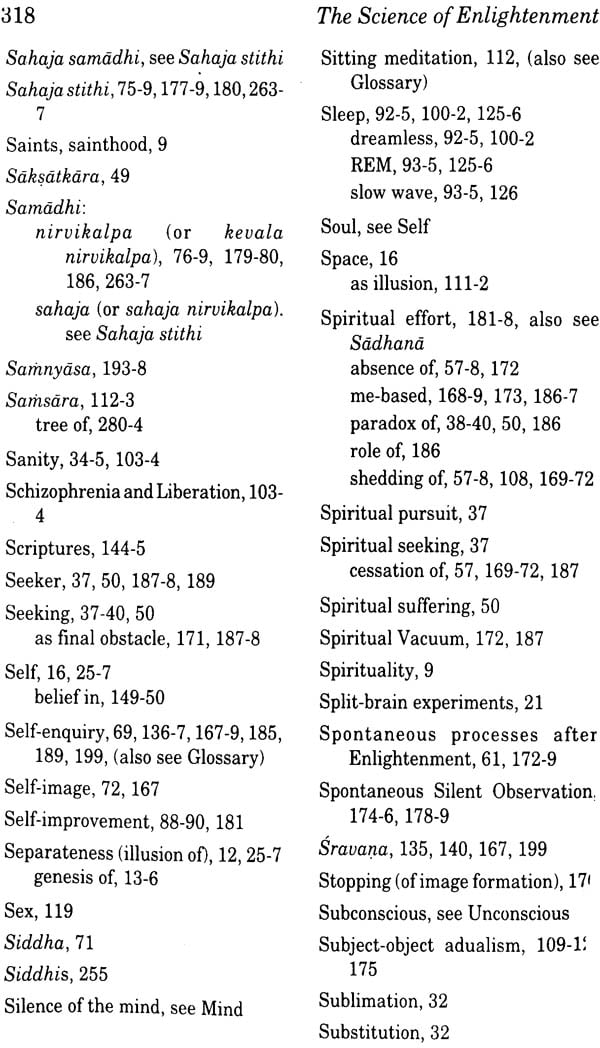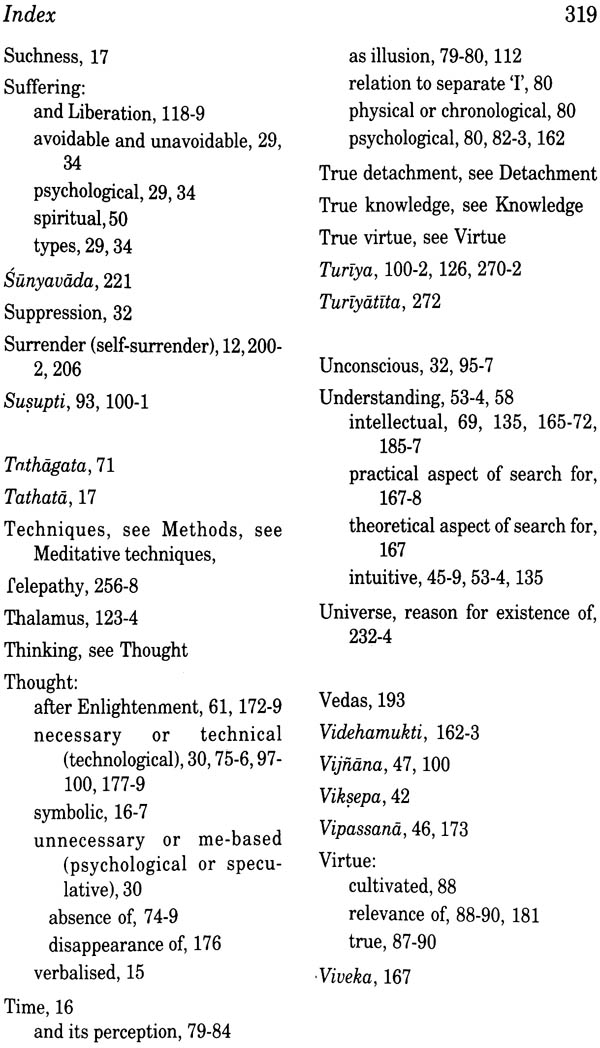
The Science of Enlightenment (Enlightenment, Liberation and God)
Book Specification
| Item Code: | IDL192 |
| Author: | Nitin Trasi |
| Publisher: | D. K. Printworld Pvt. Ltd. |
| Language: | English |
| Edition: | 2009 |
| ISBN: | 9788124602768 |
| Pages: | 320 |
| Cover: | Paperback |
| Other Details | 8.5" X 5.5" |
| Weight | 480 gm |
Book Description
While is the precise nature of reality or God.
And what exactly in scientific terms is the much talked about spiritual phenomenon called Enlightenment? Us it all scientifically possible for a state devoid of ego to exist? And can a person do his normal duties in life in such a state.
This book answers these and kindred questioned convincingly in a way that should appeal to a scientist a spiritualist and a lay person alike. The author demonstrates how the spiritual phenomena of Enlightenment and liberation do have an eminently satisfactory scientific explanation-an explanation which he also reconciles with conventional spiritual teachings. Finally flitting adroitly form Advaita to Tao, Zen to Sufism Buddhism to Christianity, Dr tarsi Shows how the teachings of Different faiths of the one and the same grand big picture.
Dr. Tarsi’s book not only dispels many of the myths misconceptions and distortions woven around Enlightenment the Liberated State the Soul and Death but explores the rationale behind wide-ranging traditional beliefs as well.
Written lucidly the book is bound to interest scientist skeptics and anyone else even remotely concerned with spirituality.
Dr. Nitin Trasi is a practicing gynaecologist with a post graduate degree in the discipline from the University of Bombay. He combines serious studies of religion and philosophy with profound personal insight as well as close interaction with Several sages.
From time immemorial ever since he learned to speak hand think man has speculated and wondered about God and about things spiritual. Ancient and prehistoric art and paintings testify this fact. But never has a scientifically convincing answer been found so far the vexed question does God exits and if he does what is his nature? Now this crucial gap in our knowledge is sought to be filled by this book.
This book then is offered especially to those readers who may be plagued by the existential questions about Life, God and so on- in short those who sometimes wish to know What is it all about.
The subject of spirituality is generally considered highly esoteric and has always been shrouded in myth, mystery superstition and tradition. The aim purpose of this book then is to demystify the entire subject of spirituality and the phenomena of Enlightenment and Liberation do have a scientific basis, and can be precisely defined in scientific psychological terms.
Although volumes of literature have already been written on the subject of spirituality with physics (notably The Tao of Physics by Fritj of Capra) and with psychology (The Spectrum of Consciousness and others by Ken Wilber) This book attempts to do something different in that it offers for the first time a completely cohesive theory explaining spirituality from all angles –spiritual scientific anatomic physiological psychological, mystic and practical a sort of a Grand Unified Theory of Spirituality. It is also shown how the traditional or conventional teachings can be reconciled with this theory.
This book defines precisely and explains in detail the phenomena of Enlightenment and Liberation in psychological terms and makes a compete and in depth psychological study of the Enlightened and Liberated person, a task perhaps never attempted before. It goes into the subject of death, and also describes true nature of God and explores the possibility of proving (or disproving0 his existence. It finally discusses in scientific detail the practical aspect of what a person is to do to reach his spiritual goal and the relevance of the teacher the guru and of the various spiritual techniques and also their scientific basis.
In short this book attempts to provide a complete an comprehensive theoretical explanation as well practical guide to all things spiritual. All that is asked of the reader is that he keep aside for moments his own existing notions and ideas on the subject and read the book with a completely open mind. At the same time the reader is not being asked to accept the conclusions in this book as final and authoritative. All that he is asked to do is it as a sort of a working hypothesis during his own research on the subject for ultimately each has to find out and see for himself.
This then is a scientific study of spiritual –spirituality examined form the perspective of science, medicine, psychology. And it is shown that a convincing consistent cohesive scientific explanation can be given for spiritual phenomena. The spiritual message is restated here in the scientific idiom- in the language of science.
Perhaps one hopes the day is not far off when the phenomena of Enlightenments and Liberation may be found included in standard medical texts of psychology and a liberated or Enlightened person is seen not as a freak of nature nut as the most normal sane, uncomplicated human being that there can be. And if this text serves to contribute even a little to that end, I would consider my labour well rewarded.
This work, The Science of Enlightenments by Dr. Nitin Trasi is and attempts to find a scientific basis for consciousness and spirituality. There are at least who question for which answers have been eluding us for thousand of years: why is there anything instead of nothing? And why are there living and non-living things? The above two questions can be further expanded to include. Why is there again a difference between various forms of living beings, particularly regarding Consciousness? Do animals have Consciousness or is that Man alone is gifted with Consciousness? And when did Man become conscious that he is conscious? Is consciousness entirely due to material assemblage of things or is there something beyond materialism in consciousness?
Dr. Tarsi has analysed some of the concepts connected with consciousness in great detail, collecting and saint. The writing is lucid and cogent. The author provokes thinking and one ca elaborate further on the ideas suggested by Dr. Trasi. I find the book to be highly educative and it will certainly lead one to find spiritual solace. The extensive bibliography will also aid interested students to proceed further in the study. I wish the author all happiness in all his endeavours.
Science versus Spirituality
Science and spirituality are commonly perceived to be divorced from eacj other they are thought to be mutually exclusive. So much so that one normally does not look for science who believe in the spiritual seem ti have compartmentalized their minds. So that science and spiritual and spirituality co-exits but in an uneasy truce. It is presumed that one cannot demand scientific explanations in it presumed that one cannot demand scientific explanations in spiritual matters.
But in ancient times both in India and the west the two had a common origin. In fact science was called natural philosophy in the west and in the East too, spirituality was approached in a spirit of scientific enquiry. The Brahma Sutra begins with the words athato brahma jijnasa (now therefore an enquiry into the one side spirituality on the other. Now to reconcile the two is as Dr. S. Radhakrishanan has said the task set to our generation.
Secondly though some of the spiritual texts may have been written in a scientific manner, science itself has science advanced to an extent which could not have been possibly imagined in those early time could. So it is now perhaps time re-evaluate the spiritual contentions in the light of current scientific knowledge.
Finally the distinctions between spirituality and science these very classifications are themselves man made and artificial. Nature is one and known no such distinctions follows therefore that if a phenomenon exits in nature, it must submit to a scientific explanation however far we may be from discovering one. As men of science, it behooves us to look at such matters with a scientific perspective in an objective manner.
Is it then possible to look into the matter of spirituality with a scientific eye? Is it possible to form a hypothesis which will broadly cover and explain these phenomena which we will decide to agree do undeniably exist- a theory which will satisfy both scientist and spiritualist?
This then is the problems which will be addressed in the succeeding pages.
A note on the use of the word consciousness’; The word consciousness (with a Small) is used in this book in its ordinary meaning as a function or property of the living of the human brain.
Etymologically the word consciousness is derived from the Latin scire (to know0 and cum (with). Thus consciousness is to know with. A lower life –from may be alive but not really conscious in the sense of being aware. What is required for such with a collection of specialized nerve cells which we call the brain. The word awareness is specifically or consciousness in action so to speak. It denotes attention. Thus there may be consciousness without awareness without awareness as with respect to subliminal stimuli for example.
Thus the word the small (consciousness) has been used for the individual consciousness. On the other hand we have used the word with a capital C (Consciousness) to denote the collective or Universal Consciousness. When it is stared that “Consciousness is one” (Chapter 1), it refers to the postulate that although we feel that we are each of us separate centres of awareness each (with a small c) the actual reality that there is only one universal Consciousness of simply Consciousness (Capital C).
Even so at this point we are still talking of Consciousness as if inanimate objects and the rest of the inanimate universe is something different. However as we progress through the book the word expands till it included everywhere that exists and ultimately the word Consciousness comes to a take an all-encompassing meaning synonymous with Brahman, That Tao All-That-Is Mind, etc. thus later on in the book we will see that the external world too can said to be within Consciousness Just as in a dream the entire world of objects is within the dream-consciousness.
This is the point where present day science radically differs. In their presently accepted scientific world view matter is seen as the primary reality and consciousness is considered secondary. That is consciousness is seen as a property of matter or an epiphenomenon. On the other hand in the philosophical world-view, consciousness is primary and matter is seen to exits only because Consciousness exits. That is consciousness is the primary reality, or the base or ground of all that exits (the ground of all being). This in the spiritual or philosophical reality everything, including matter, exits in Consciousness. It only appears as of consciousness is a function of matter (of the brain) just as in a dream the dream consciousness appears to e a function of the brain of the body seen on the dream. In short the world exits in Consciousness and the other way around
Interestingly exactly this same theory has now been propounded in detail by physicists Amit Goswami who claims that it solves most or all the paradoexes of quantum physics.
However the main purpose of this book in not realty to speculate about matters, but rather to establish that the phenomena of Enlightenment and Liberation do in fact exist, and that they can be explained vary well in medical and psychological terms. In this book we are interested less in the theories of Consciousness and matter, and more in the condition of enlightenment the state of Liberation and the psychology of the sage the Enlightened one.
Condensation: This is a chapter wise condensation or summary of the main thesis as outlined in detail in the book. A brief reading of this may prepare the reader for what follows later.
Chapter1 : This book is a scientific study of spirituality and as a staring point we have taken the core of the teaching of all the sages over the centuries which is that Consciousness is one, in other words we are not separate psychological entities.
It is only man that suffers from this unique delusion of being a separate entity of having a soul. How did this come to be? We find it is the combined result of his symbolic way of thinking language ability to think of past and future and fear of death. Symbolic thinking gives his the ability to symbolize and conceptualise himself as a separate entity over and above the body mind and the fear of future death and annihilation gives him the incentive and reason to thus conceptualise. And is his rejection of death is born the idea if the separate soul or ego, which is considered to have existed as a separate entity even before the birth of that body mind and which will survive after its disintegration.
Occasionally a rare human bring sees through this illusion and such a person is then is then said to be Illumined or Enlightened.
Chapter 2Psychological suffering is shown to be related to this idea of being a separate entity. This idea leads to unnecessary conditioning which in turn leads to unnecessary thinking and avoidable (psychological) suffering. The Enlightened person, on the other hand undergoes a process of de conditioning leading eventually to his Liberation (from unnecessary suffering).
Chapter 3 The idea of Liberation is dangled before the eyes if the common man by most religious as a sort of a panacea for all the ills of the world, and he is encouraged to purpose it as a goal Thus begins the seeking of Enlightenment by the person for ‘himself’ as an entry. As Enlightenment is in fact the realization that he is not separate entity, these very efforts thus become self-defeating the illusion of the me. This is the paradox of spiritual effort.
Common spiritual terminology is discussed form a scientific perspective.
Chapter 4 Enlightenment is defined as the intuitive understanding that one is not a separate entity. The characteristics of Enlightenment are discussed, and its psychological, physiological and anatomic aspects.
Chapter 5 Liberation is the end result of the process of de-conditioning initiated by Enlightenment.
What are the characteristics of a Liberated person? How does he act react? What does he do in life after Liberation? What does he think? How is his sleep? What does he dream? How does he see the world? What is his relationship with God? These and other questions are discussed incluing the scientific aspects brain waves and wareness.
Mysticism and modern science (especially quantum physics are shown to converge and so merge imperceptibly that is often difficult tbo converge and so merge imperceptibly that it is often both seen as illusions and consciousness is no more merely a function of the brain. It is seen as all-encompassing all inclusive.
Chapter 6Is a guru required? How exactly can he help? How does one select the proper guru? What must be the attitude of the seeker towards the guru?
Chapter 7 What happens after death? If there is no soul in reality, then what survives after death? And why die the religious insist on life after death? What rebirth and who is reborn? Revolutionary as the idea (that thre is no separate individual soul) may seem, it is shown that this is exactly what the sages and even traditional scriptures have been trying to say.
Chapter 8The practical aspect –what is one to of actually?
The second part dealing with spontaneous processes is only of academic interest. It is included specially to point out that these are not direction to be actively followed, which is how they are often misunderstood.
Chapter 9 The previous chapter is here correlated with the traditional margas of karama Bhakti and jnana. The dispute over their relative merits is discussed.
Chapter 10 The chapter is no God. The common man’s idea of God is first discussed and then the reality of God as described by the mystic . the question of proving the existence of God is scientifically explored, and also the question of the reason for the existence of the universe. Finally as sample the descriptions given by two well known mystics of India are presented in some detail.
Appendix: The doctrine of Advaita is compared with the thesis outlined in this book. The matter of paranormal phenomena, miracles, telepathy, faith healing instances of reincarnation etc, are discussed in the light of our thesis and it is shown that all these can be convincingly and satisfactorily explained scientific way. Nirvikalpa Samadhi and sahaja sthiti are discussed as also meditative techniques.
Finally same commonly asked question are answered.
| Foreword | VII | |
| Preface | IX | |
| Acknowledgements | XII | |
| Transliteration Chart | XIV | |
| Introduction | 1 | |
| 1 | Me and the Other | 9 |
| 2 | suffering | 29 |
| 3 | Spiritual Knowledge and its Pursuit | 37 |
| 4 | Enlightenment | 53 |
| 5 | Liberation | 71 |
| 6 | The Guru | 129 |
| 7 | Death and After | 149 |
| 8 | What should ‘I’ Do? | 165 |
| 9 | Karma, Bhakti and Jnana Marga | 189 |
| 10 | God | 213 |
| Appendix | 251 |

